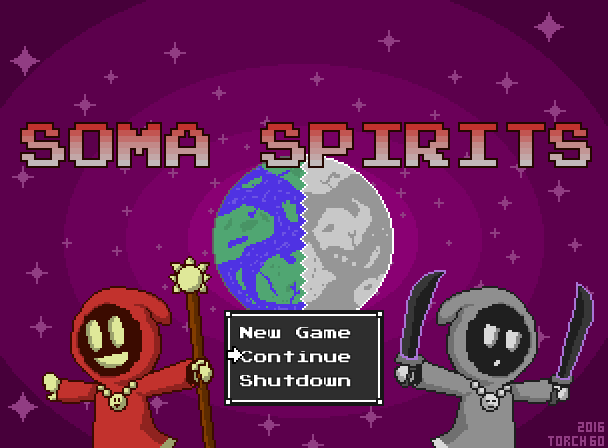
Another day another demo and today’s demo is for the RPG Soma Spirits. This is a much shorter demo than the one for Jimmy and the Pulsating Mass, consisting of an introduction, a small dungeon, and a boss fight to cap things off, but this is a much smaller project (the estimated length for the completed game will be two to three hours) and the demo still effectively shows off the game’s most important features within this short span.
The setting of Soma Spirits takes the familiar concept of a light world and a dark world and puts some new twists on it. The world of Soma has been divided in half after a great conflict with the inhabitants and places in one half being mirrors of those found in the other, but this time the two worlds are that of Joy and Sorrow. The interesting twist here is that both worlds seem equally flawed in their own ways.
We are first introduced to the world of Joy along with the character Heart and, as the name implies, it a vibrantly bright and happy world. In fact, everything and everyone is happy. The birds are happy, the trees are happy, the alarm clock is happy, the vegetables in the garden are happy, even the doormat is happy. Heart in particular is especially happy right down to perpetually having a giant grin and his default weapon being a Joy Baton which the flavor text says is used “to spread happiness”. The whole place looks and feels like it fell out of a cartoon aimed at very young children and the music sounds like it could belong in an old Disney cartoon. The entire world is so ridiculously happy that after a while, and in large part thanks to the music, it becomes sickening, or at least it does until Heart speaks with an enormous tree named Elder Oakley, who is not happy yet seems to be incapable of explaining what the problem is. This prompts Heart to make use of a magical gate and with this we get introduced to the world of Sorrow.
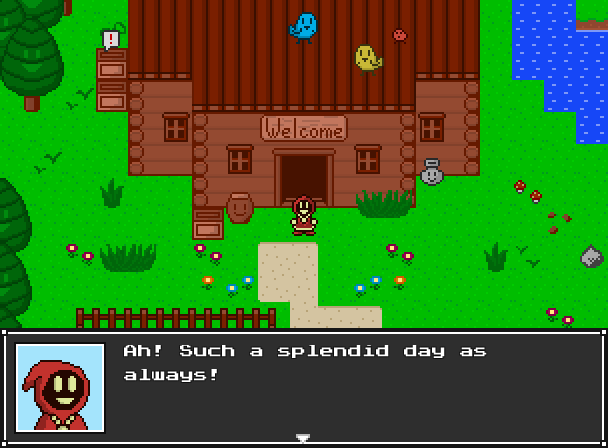
Sorrow, contrary to its name, is not so much a world of perpetual sadness as it is a world complete devoid of warmth, enthusiasm, and optimism. The entire world is in greyscale and it is here that we are introduced to the second main character, Soul, who is Heart’s counterpart. Unlike Heart, Soul’s expression is one of perpetual neutrality which goes along with his more serious and logic-oriented personality. The inhabitants of Sorrow are preoccupied with day to day problems; a resident of Joy who dreams of the nice things they would be able to buy with $100 has a Sorrow equivalent ask Soul for $100 to start up a business. Likewise, while Elder Oakley’s Sorrow equivalent is crying just like his Joy version, the inhabitants of Sorrow ask Soul to find out who’s crying because it is disturbing their morning while the inhabitants of Joy told Heard that they were worried because someone sounded sad. Joy is a world severely lacking in logic and reason, being founded on perpetual happiness, but Sorrow is a world equally lacking in emotion where anything notable is only notable because it is a problem which must be resolved. It’s a creative way to portray a setting with mirror worlds and this divide is central to every major aspect of the game.
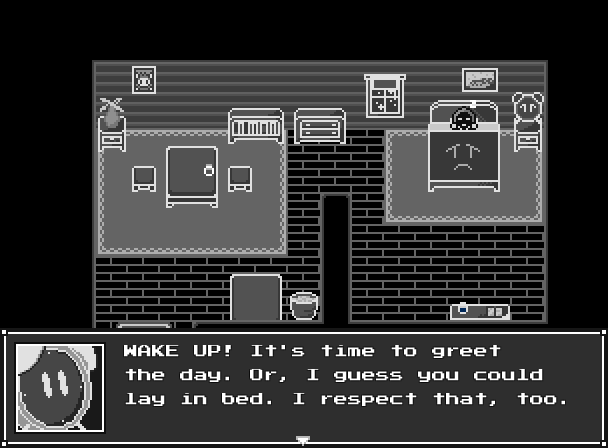
After the world and character introductions the rest of the game takes place in a nearby forest as Heart and Soul team up to track down a thief who apparently stole the Seed of Beginnings from Elder Oakley. This forest serves as the dungeon of the demo and shows off all the ways in which the world divide affects the gameplay outside of the plot. Though the two worlds are virtually identical in many ways, they are not entirely without differences and paths which are open in one world may be closed in the other. This leads to the inclusion of portals which let you swap between the two worlds when progression in one world is no longer possible; changes you personally enact in one world, such as flipping a switch to create a bridge, are still reflected in the other. Small chests and other objects containing items are also unique to each world, so it is often worthwhile to make use of a portal and look around even if you don’t need to in order to progress. The one exception comes in the form of large chests, which are found in the same location in both worlds (though the way to reach said chests may vary between the two) and contain different items in each world, but these chests open in both worlds when you take an item so you need to carefully choose which item you prefer. The large chests could have been an issue if they immediately opened when you interacted with them, but this is smartly avoided by telling you what the item is, along with its stats, before asking you if you want to take it; you still need to reach the chest in both worlds to see both items, so some backtracking is in order if you decide you want the initial item, but it’s far better than needing to worry about accidentally opening a chest before you’ve had a chance to look at the alternative.
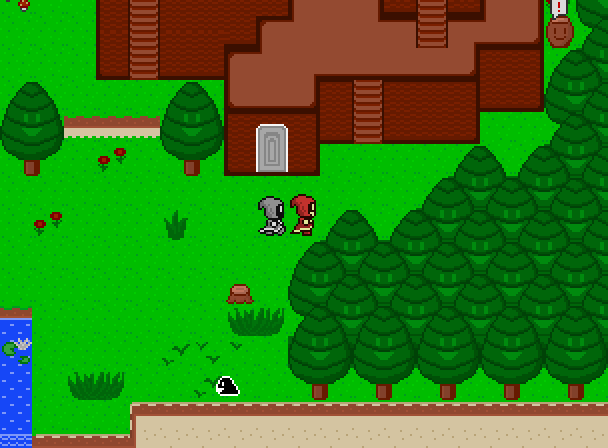
Combat is another thing which is significantly affected by which world you are currently in. In addition to the Joy and Sorrow versions of the enemies having different capabilities, Heart and Soul have access to different sets of skills based on which world they are in. Each character has access to two sets of skills, Power and Support, but they can only make use of Power skills in their respective world and can only use Support skills when in the other’s world (ex: Heart can use Power and Sorrow can use Support while in Joy). I reached level 3 by the end of the demo and it seems like Heart and Soul have similar skillsets with a few distinct differences. For example, both characters gain access to the same Heal spell in their Support sets, but Heart has a spell and an enchantment buff both based around fire while Soul’s equivalent skills are based around ice. More importantly, Soul gains a Power skill which reduces an enemy’s physical attack power while Heart’s equivalent reduces magic attack power, so their skillsets diverge in more ways than just which element they use. There’s also an SP system which doesn’t come into play over the course of the demo and room in the Skills menu for one more skill category, though exactly how it will function in the full game is a mystery.
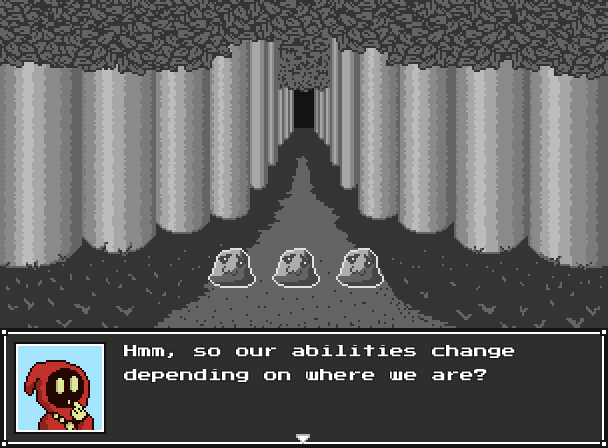
The part of the demo which really sells the game (figuratively speaking since this is freeware) in my opinion is the boss fight at the end. While I usually try to avoid spoilers as much as possible, I think this particular case is important enough to showing off just why this game’s concept works so well that I’m going to be speaking about it openly; if you want to avoid spoilers, now is your last chance to stop reading and go play the demo for yourself. It turns out that the ‘thief’ is actually the sentient Seed of Beginnings, named Acre, and it is running away because it wants to see the world and make people happy in its own way rather than being planted. Just like the world of Soma itself, you are only given two flawed ways to resolve this problem with no safe middle option; you can either convince Acre to give up on his own dreams in order to fulfill a duty he never asked to have by being planted in the forest or you can agree to let him seek out his desires and leave the forest, but doing so will prevent the forest from thriving and hurt its inhabitants. Which choice you pick is dependent upon which room you confront Acre in (and the game stops you before you proceed into the boss room to clarify this), but either choice results in fighting Acre and regardless of the decision you make the conclusion you reach inevitably leaves nobody particularly satisfied. While some players may feel upset at not being given the option of taking a more neutral path which could leave everyone happy, I think such an option would feel insincere and cheapen the experience; I suspect that there will be a way to potentially unite the world and restore its balance at the end of the full game because that’s usually a conclusion which can be reached in games with similar settings, but as things stand the world and its inhabitants are split between two flawed extremes and it makes sense to only allow players to choose between two morally grey decisions.
The boss fight itself also brings a few things to the table. In an interesting narrative choice, while Joy is the world of emotion and Sorrow is the world of logic, it is in Joy which you must convince Acre to responsibly accept being planted for the good of the forest and in Sorrow where you give him permission to go ahead and seek out his own way of making people happy because you are fixing an excess of joy or sorrow. Furthermore, the fight differs in far more ways than being colorful in Joy and being greyscale in Sorrow. Within Joy Acre takes on the appearance of a wizard with a magical staff, a glowing hand, and a crazed grin and the fight music is a much more aggressive version of the standard Joy theme. On the other hand, Acre takes on the appearance of a depressed knight in Sorrow with a spear and a sad shield and the music is a more epic-sounding version of the passively gloomy Sorrow theme. As you can probably tell from the appearances, Acre’s arsenal of attacks is different between the two worlds as well with a focus on magic in Joy and a focus on melee skills in Sorrow. This plays to the party’s strengths in either world as Soul can only decrease an enemy’s physical attack power in Sorrow and Hearth can only mitigate magic attacks in Heart; Acre’s elemental weakness in either world also matches up with the elemental you have at your disposal. It’s a simple fight and the best strategy to use for it is obvious given how few skills are available, but that’s to be expected of a first boss and it gives a strong hint as to how significantly different future bosses are likely to be depending on which world they are fought in.
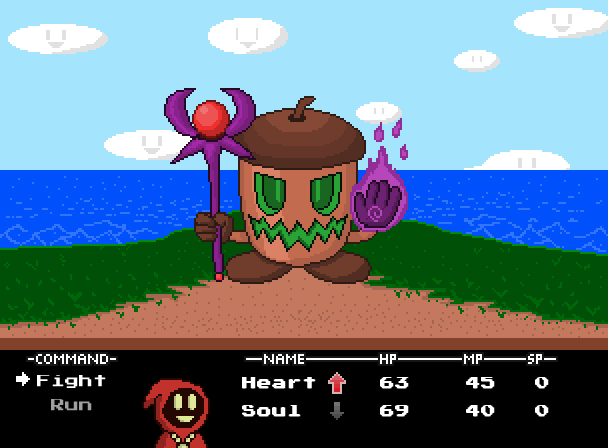
Before wrapping up, there are a few last bits to address, some good and some bad. First, if it wasn’t clear, I think the aesthetics of this game are wonderful; every song and graphical asset is original and everything works together to highlight the nature of each world and the contrasts between them. I also always enjoy when a game makes effective usage of variations on a theme and Soma Spirits definitely knows how to get the most out of thematic variations. On the more borderline side of things is the issue of enemies; encounters are visible on the map and can generally be avoided, but making use of one of the many world-swapping portals causes every enemy to respawn, which can be a pain if an enemy is in a position where it can’t really be avoided or if you just don’t want to spend time avoiding an enemy you’ve recently dealt with. To the developer’s credit, they have already stated that they will be addressing the issue of overly frequent encounters in the finished game by either removing some enemies entirely or making enemies only respawn after full screen transitions and not after using a portal (personally I prefer the latter option and I suspect it would be easier to implement in the long run, though either choice would be beneficial). The only significant issue I found within the demo was one of layering. As far as the usual graphical layering issues go, the only one I noticed was a flower which looked like it was slightly overlapping a tree in a way which didn’t make sense; if any of the more common and severe graphical layering oversights exist in the demo, such as being able to stand on the side of a wall or walk over large furniture, I didn’t notice them during my playthrough. Where the real layering issue lies is in the fact that the game ignores height so I was able to interact with a barrel on the ground which contained an item even though I was on a ledge high above it and, more importantly, it becomes impossible to walk underneath a rope once it is used to create a bridge between two ledges. The object interaction issue can be resolved harmlessly enough by making sure not to put any interactive objects on tiles where they can be reached from multiple heights. As to the rope issue, I’m familiar enough with the various RPG Maker engines to realize that its tile and event systems can be a bit tricky to work with when you’re trying to make something which can be walked over when approached from one direction and walked under when approached from another direction, but people have found solutions to this issue in the past and this is absolutely something which should be resolved in the full game or else it will inevitably crop up every time there is any sort of bridge.
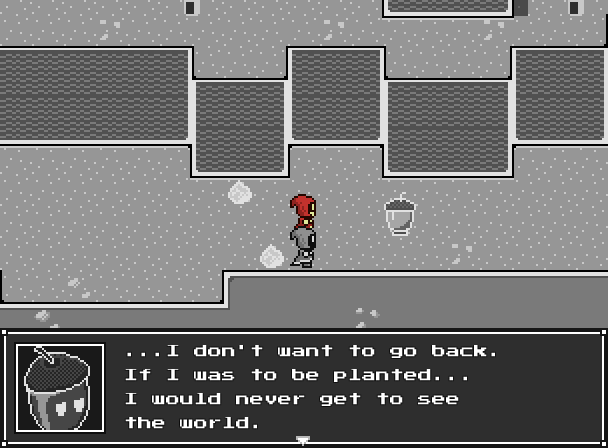
Though the combat system still has some mysteries which have yet to be revealed and the full extent of the impact player choices will have on the overarching narrative is unclear beyond the fact that every major choice matters to at least some degree, this demo makes it clear that Soma Spirits has the potential to go in some very exciting directions and that it is a game well worth following.